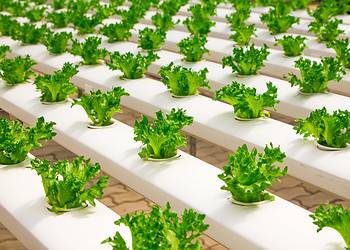
Across the world, farmers are locked in an arms race with pests and pathogens. For decades, pesticides have been their most powerful weapon, allowing them to grow enough food to feed billions. But as pests evolve, these chemicals are becoming less effective. They also come with a steep cost — damaging ecosystems, polluting water, and posing risks to human health.
Now, a group of scientists believes they’ve found a different way to help crops fight back. And it doesn’t involve spraying more chemicals. Instead, they’re turning to something far more natural: the plants’ own immune systems.
In a study published in Frontiers in Science, researchers in France from the University of Neuchâtel explore how “induced resistance” — a kind of immune priming for plants — could reshape the future of farming. The process, which is similar to how vaccines work in humans, helps plants defend themselves by triggering their natural defense mechanisms. Over time, it could drastically reduce the need for pesticides while making crops more resilient in an ever-changing environment.
“While induced resistance has been studied for decades, its exploitation in crop protection has only recently begun to gain momentum,” said Professor Brigitte Mauch-Mani, the lead author of the study. “We argue in favor of a holistic approach to crop protection, which combines multiple strategies to deliver tailored solutions. Induced resistance sits at the heart of such an integrated approach.”
A Plant’s Memory

The idea behind induced resistance (IR) is both simple and powerful. When a plant encounters a mild threat — such as an insect nibbling on its leaves or a pathogen attacking its cells — it doesn’t just try to fend off the immediate attack. It remembers it.
The plant’s defense system becomes “primed,” meaning it can respond faster and stronger the next time it faces the same enemy. In essence, the plant has learned to protect itself more efficiently, just as a person’s immune system might after receiving a vaccine.
“Basically, IR (aka plant vaccination) is putting plants on high alert,” Mauch-Mani told ZME Science in an email.
“Thanks to induced resistance, plants have a remarkable ability to ‘learn’ from these encounters,” she added. “They use their own defense capacities to react faster and more powerfully than before.”
Induced resistance functions much like a plant’s immune system. It works through complex signaling pathways, where certain compounds, like jasmonic acid and salicylic acid, play a central role. These chemicals help orchestrate the plant’s response, initiating the production of defensive proteins, strengthening cell walls, and even releasing compounds that can directly inhibit or kill invading organisms. Once primed, the plant can remain in a heightened state of defense for a long time.
“Since IR uses the plants’ own defense capacities it reduces the need for an input of potentially harmful pesticides. Additionally, pests and pathogens are less likely to develop resistance against IR than pesticides, therefore leading to stable longterm protection,” said Mauch-Mani.
In fact, some plants even pass this “priming” down to the next generation. Scientists suspect that this memory may be transmitted through epigenetic mechanisms — changes that don’t alter a plant’s DNA but allow it to adapt based on past experiences.
A Delicate Balance
But for all its promise, induced resistance comes with challenges. One of the biggest is finding the right balance between growth and defense. When a plant’s immune system kicks into high gear, it diverts energy that could otherwise go toward growing taller or producing fruit. Too much defense can result in stunted plants, as Mauch-Mani and her colleagues discovered.
“In collaboration with colleagues, we generated transgenic Arabidopsis that constitutively produced salicylic acid (a good inducer of IR). The plants were resistant to any pathogen and pest they encountered. Colleagues joked that it wasn’t really resistance; the plants were just too small to eat!” said Mauch-Mani.
This trade-off between resistance and growth is a hurdle scientists are working to overcome. And then there’s the question of how well induced resistance works in real-world conditions. While it has shown promise in controlled environments, the variability of farm fields —with their fluctuating temperatures, soil conditions, and microbial life — could complicate things. But Mauch-Mani is confident that with more research, these obstacles can be overcome.
“We need to understand how environmental factors influence induced resistance,” she said. “This will help us develop strategies that make it as effective as possible under different conditions.”
From Farm to Table
There’s another reason to be excited about this discovery: it could make our food healthier. When plants activate their defenses, they don’t just ward off pests. They also produce compounds that are beneficial to humans — substances like polyphenols and flavonoids, which are known for their antioxidant properties.
“The induction of plant defenses frequently results in higher levels of these bioactive compounds in fruits, vegetables, and herbs,” Mauch-Mani explained. “These compounds have protective effects on human cells and could improve the nutritional quality of our food.”
In other words, induced resistance doesn’t just make plants tougher — it could make the food they produce healthier and more nutritious. Imagine a future where fewer pesticides mean not only a cleaner environment, but better food for everyone.
However, getting there won’t be easy. The researchers emphasize that induced resistance isn’t a magic bullet. To truly transform agriculture, it must be part of a broader strategy, one that includes techniques like integrated pest management (IPM), which uses pests’ natural predators to keep them in check. Together, these approaches could reduce the reliance on chemicals and create a more sustainable farming system.
Mauch-Mani notes that successfully integrating induced resistance in farming practices will require extensive collaboration among all stakeholders.
“This is why we believe in the importance of extension workers who can “translate” the scientific results to make them usable for farmers but also to translate the farmers’ needs so that we as scientists understand them and can work towards them,” said Mauch-Mani.
If successful, this could be the beginning of a new era in agriculture — one where crops defend themselves, food is healthier, and the planet is a little greener.






